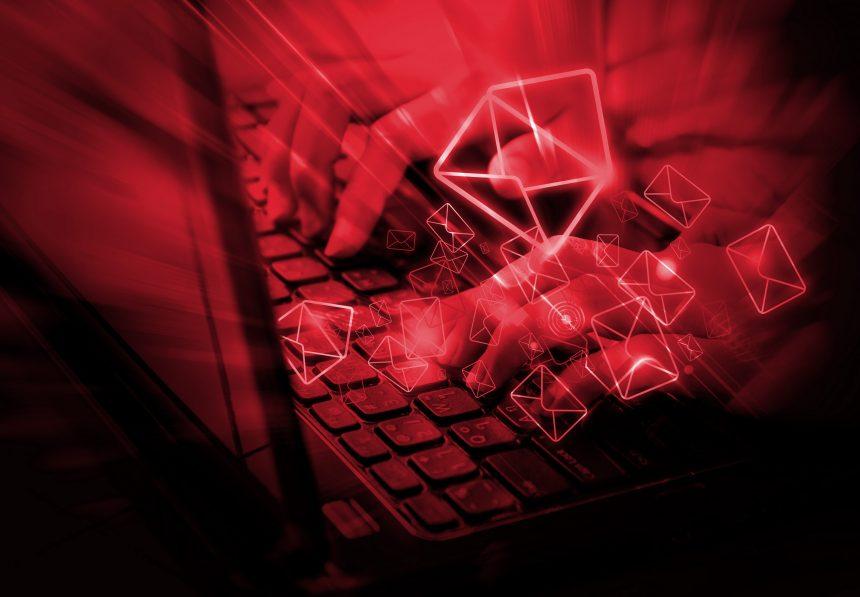Phishing scams are deceptive tactics used by cybercriminals to trick individuals into divulging sensitive information or installing malicious software. These scams often come in the form of emails, messages, or websites that appear legitimate but are designed to deceive recipients. The primary goal of phishing scams is to steal personal data, such as login credentials, financial information, or to install malware on the victim’s system.
Phishing scams typically infiltrate systems through deceptive emails or messages that impersonate trusted entities like banks, delivery services, or tech support. Once a recipient falls for the scam, they may click on malicious links or download infected attachments. This can lead to various forms of malware being installed on their system, such as ransomware, spyware, or trojans. The consequences include data theft, system damage, financial loss, or unauthorized access to personal accounts.
The Verify Delivery Error Email Scam
One particular phishing scam involves emails claiming to be from a delivery service, stating that there was an error in delivering a package. This scam often appears highly convincing, as it mimics the style and format of legitimate shipping notifications.
Details of the Scam
Email Address: The scam email is typically sent from addresses that appear to be related to well-known delivery companies or a legitimate-sounding domain. For example, you might see an email address like delivery@service-provider.com or something similar that looks official.
Instructions and Details: The email usually contains a subject line such as “Verify Delivery Error” or “Action Required: Delivery Issue.” Inside, the message will instruct you to click on a link to resolve the delivery problem. This link often leads to a fake website designed to look like the real delivery service’s site. On this site, you might be asked to enter personal information or download a file, which is, in fact, malicious software.
Purpose of the Scam: The main objective of this scam is to either steal personal and financial information or install malware on your computer. The criminals behind this scam aim to exploit the recipient’s trust and urgency concerning a missed delivery to achieve their malicious goals.
Common Reasons for Encountering This Scam
- Unsolicited Emails: You might receive unexpected emails from delivery services you do not recognize or have not used recently.
- Urgent Language: Scammers often use urgent language to pressure you into taking immediate action without thinking critically.
- Unexpected Attachments or Links: Be wary of emails with attachments or links that seem out of place, especially if you were not expecting to receive such items.
Similar Threats to Watch Out For
- Fake Invoice Scams: Emails that claim you have an outstanding invoice and ask you to download or view an attachment.
- Tech Support Scams: Messages that claim your computer has a virus and prompt you to call a fake tech support number.
- Account Security Alerts: Emails or messages that claim your account has been compromised and ask you to click a link to secure it.
Removal Guide
If you suspect your system has been infected by malware from the phishing scam, follow these detailed steps to remove it:
- Disconnect from the Internet: Immediately disconnect your computer from the internet to prevent further communication with the malicious server.
- Boot into Safe Mode:
- For Windows 10/11: Hold down the
Shiftkey while clickingRestartfrom the Start menu. SelectTroubleshoot>Advanced options>Startup Settings>Restart. Once your computer restarts, selectSafe Mode with Networking. - For Mac: Restart your Mac and hold the
Shiftkey until the Apple logo appears. Release the key when you see the login window.
- For Windows 10/11: Hold down the
- Run a Full System Scan:
- Download and install SpyHunter. This tool can help detect and remove malware that might not be caught by standard antivirus programs.
- Perform a full system scan to identify and eliminate any malicious software. Follow the prompts to remove any detected threats.
- Manually Check for Malware:
- Open Task Manager (Ctrl + Shift + Esc) on Windows or Activity Monitor on Mac.
- Look for unfamiliar or suspicious processes and end them if necessary.
- Delete any suspicious files from your system. Check your Downloads folder and any recent files you may have accidentally downloaded.
- Clear Your Browser History and Cache:
- Open your web browser and go to the settings or options menu.
- Find the section for clearing browsing data and select to clear your history, cache, and cookies.
- Update Your Passwords: Change the passwords for any accounts you believe may have been compromised. Use strong, unique passwords for each account and consider using a password manager to keep track.
- Enable Two-Factor Authentication: For added security, enable two-factor authentication on your accounts to provide an extra layer of protection.
Preventing Future Scams
- Be Skeptical: Always be cautious of unsolicited emails, especially those requesting personal information or urging you to click on links.
- Verify Sources: If you receive a suspicious email, contact the supposed sender through official channels to verify its legitimacy.
- Use Reliable Security Software: Regularly update your anti-malware tools and perform regular scans.
- Educate Yourself: Stay informed about common phishing tactics and how to recognize them.
Protect Your System with SpyHunter
Download SpyHunter today and perform a free scan to ensure your system is clean and secure. Protect your computer from future threats and gain peace of mind with SpyHunter’s comprehensive security solutions.
If you are still having trouble, consider contacting remote technical support options.





